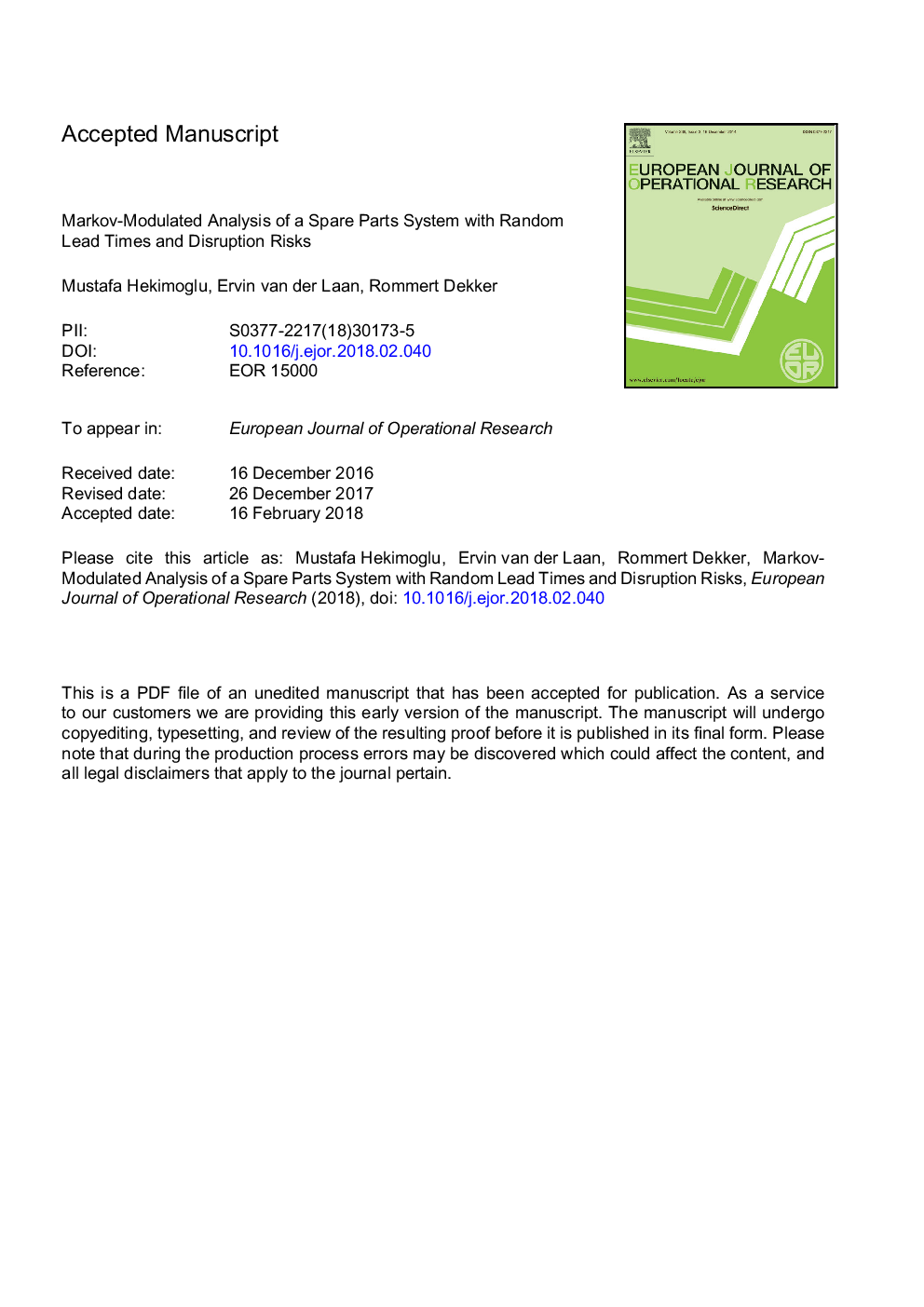| Article ID | Journal | Published Year | Pages | File Type |
|---|---|---|---|---|
| 6894673 | European Journal of Operational Research | 2018 | 34 Pages |
Abstract
Spare parts supply chains are highly dependent on the dynamics of their installed bases. A decreasing number of capital products in use increases the nonstationary supply-side risk especially towards the end-of-life of capital products. This supply-side risk appears to present itself through varying lead times coupled with supply disruptions. To model the nonstationary supply-side risk, we consider an exogenous Markov chain that modulates random lead times and disruption probabilities. Assuming that order crossovers do not occur, we prove the optimality of a state-dependent base stock policy. Later, we conduct an impact study to understand the value of considering stochastic lead times and supply disruption risk in spare parts inventory control. Our results indicate that the coupled effect of random lead times and disruptions can be larger than the summation of individual effects even for moderate lead time variances. Also, the effect of nonstationarity on total cost can be as large as the summation of all risk factors combined. In addition to this managerial insight we present a procedure for supply risk mitigation based on an empirical model and our mathematical model. Experiments on a real business case indicate that the procedure is capable of reducing costs while making the inventory system more prepared for disruptions.
Related Topics
Physical Sciences and Engineering
Computer Science
Computer Science (General)
Authors
Mustafa HekimoÄlu, Ervin van der Laan, Rommert Dekker,
